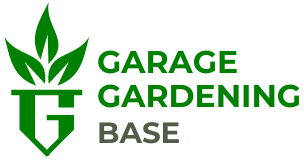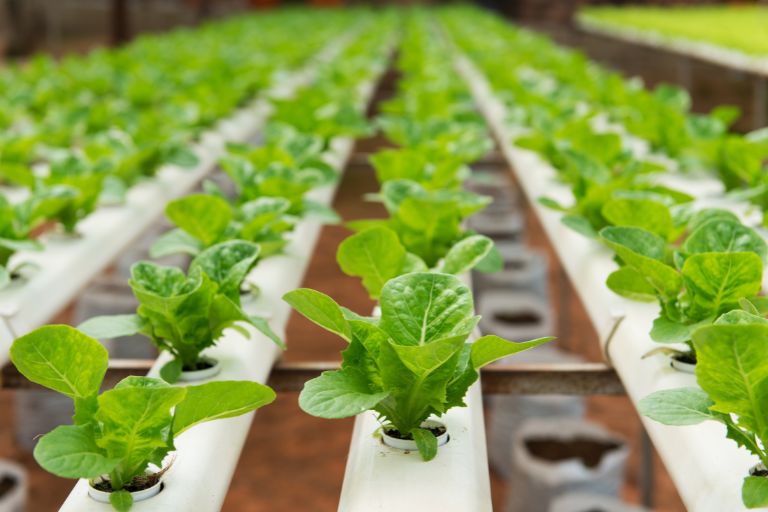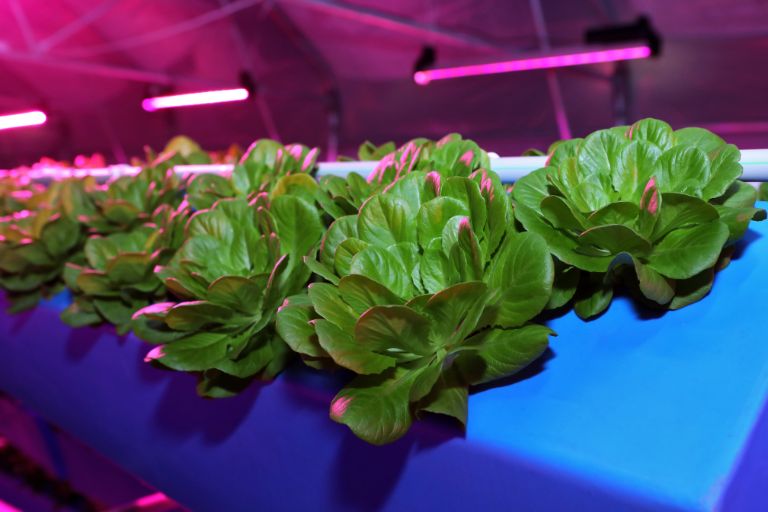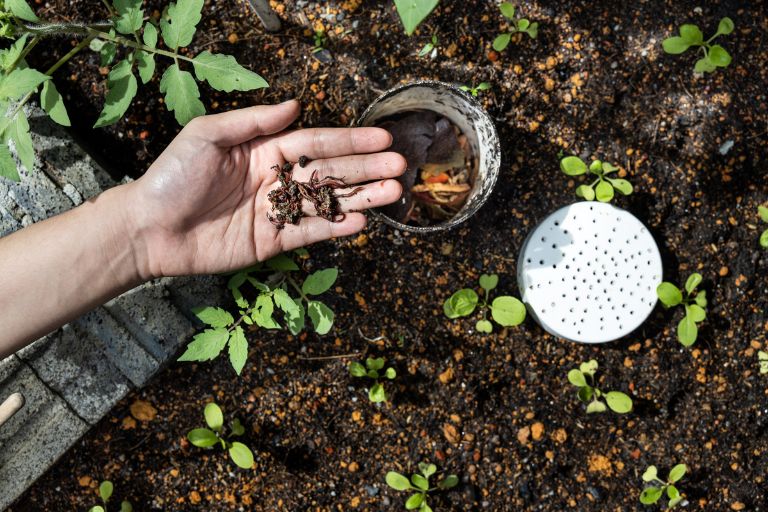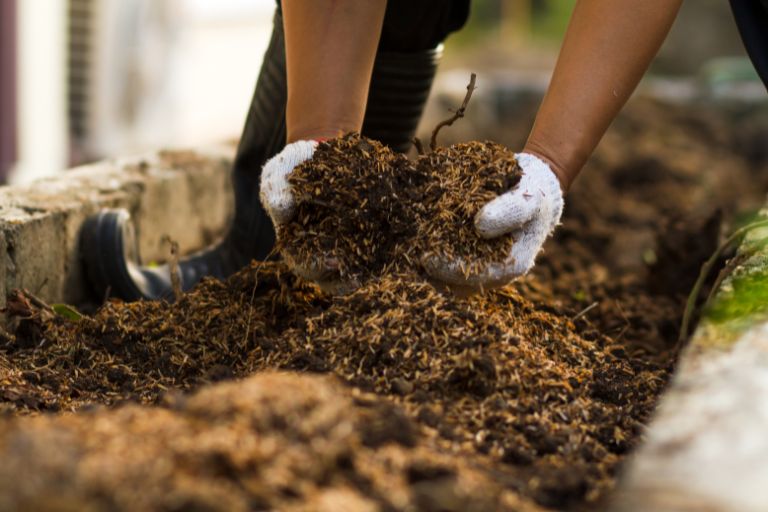Unleashing Flavor: The Art of Growing Fruits in Your Garage
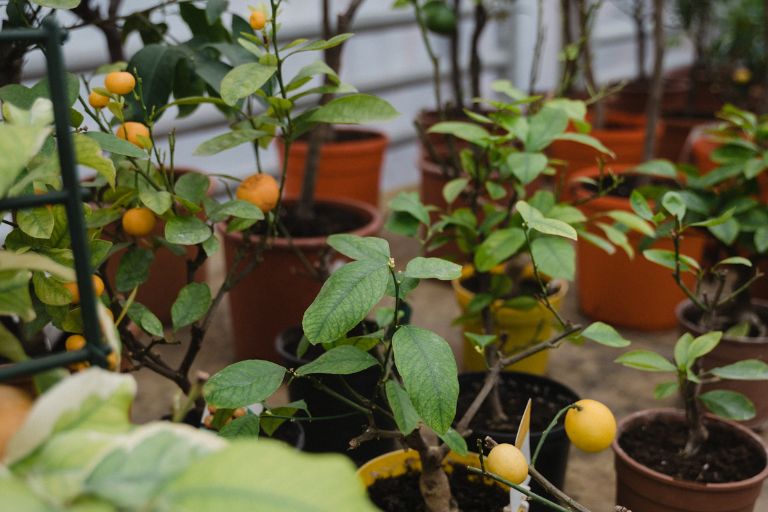
In the bustling urban landscape, where outdoor garden space is often a luxury, a quiet revolution is taking place within the confines of the most under-utilised room in our homes: the garage. Gone are the days when garages were just a place to store tools and old belongings. Instead, they are being transformed into vibrant havens of green, where the sweet aroma of ripening fruit mingles with the scent of motor oil and sawdust.
Indoor gardening, once relegated to small pots on windowsills, has become a sophisticated art form, with garage gardens at the forefront of this horticultural renaissance. As the quest for fresh, home-grown produce gains momentum, more and more enthusiasts are discovering the untapped potential of their garage spaces to grow a bounty.
In this article, we take you on a journey through the fascinating world of garage gardening, where the boundaries between indoor and outdoor growing are blurred and the possibilities for growing luscious fruit know no bounds. From the practical considerations of space and light to the sheer joy of harvesting your own juicy bounty, we explore the joys, challenges and rewards of garage gardening. Join us as we delve into this fruitful endeavour and unlock the secrets of cultivating nature’s treasures right on your doorstep.
Introduction
Indoor gardening has experienced a remarkable surge in popularity in recent years, driven by a growing appreciation of sustainable living, the desire for fresh produce all year round and the increasing urbanisation of our communities. Among the various indoor gardening methods, using garage space to grow fruit has emerged as a particularly practical and innovative approach. In this article, we explore the growing trend of indoor gardening and the unique benefits of growing fruit in your garage.
Urbanisation and limited outdoor space
As more and more people move to urban areas, outdoor space becomes a premium commodity. Traditional gardening methods are not always feasible due to space constraints, leading individuals to seek alternative solutions for growing their own produce.
Year-round production
One of the main advantages of indoor gardening, particularly in a garage, is the ability to maintain consistent growing conditions throughout the year. Unlike outdoor gardens, which are subject to seasonal fluctuations and adverse weather conditions, a garage provides a controlled environment conducive to year-round fruit production.
Protection from external factors
Garage gardening provides protection from external factors that can affect plant health and productivity. This includes protection from extreme temperatures, pests and adverse weather conditions such as heavy rain or hail, which can damage delicate fruit crops.
Maximising under-utilised space
Garages are often underutilised spaces in many homes, serving primarily as storage areas for vehicles, tools and miscellaneous items. By repurposing this space for gardening, individuals can make the most of available square footage and transform their garage into a productive and rewarding environment.
Accessibility and convenience
Growing fruit in your garage offers unparalleled accessibility and convenience. With your garden just steps away from your living space, you can easily tend to your plants, monitor their progress and harvest fresh fruit whenever you want without having to travel to an outdoor garden plot.
Customisation and control
Garage gardening allows for greater customisation and control over growing conditions. From lighting and temperature regulation to soil composition and irrigation, gardeners have the flexibility to tailor the environment to the specific needs of their fruit crops to maximise growth and yield.
In the world of gardening, few things are as frustrating as being at the mercy of unpredictable weather patterns. However, for those savvy enough to harness the power of indoor gardening, such concerns are a thing of the past. When it comes to growing fruit in your garage, the potential for year-round production and protection from adverse weather conditions are two standout benefits that take the practice to new heights of convenience and reliability.
Year-round production
Unlike traditional outdoor gardens, which are subject to the vagaries of the seasons, a garage provides a controlled environment conducive to continuous growth and fruit production. With the right setup, you can extend your growing season indefinitely and enjoy fresh fruit year-round, regardless of outdoor conditions.
Controlled climate
One of the key benefits of garage gardening is the ability to regulate temperature and humidity levels to create optimal growing conditions. This means you can protect your fruit crops from extreme heat, frost or sudden temperature changes, ensuring consistent growth and minimising the risk of weather-related damage.
Protection from frost and cold spells
For many gardeners, frost is a major threat to delicate fruit crops, especially in regions with short growing seasons. By moving your fruit garden into the sheltered confines of your garage, you can protect your plants from frost damage and extend their productive life well beyond what would be possible outdoors.
Protection from adverse weather events
Adverse weather events such as heavy rain, hail or high winds can wreak havoc on outdoor gardens, causing physical damage to plants and reducing yields. By growing fruit in your garage, you’re creating a protective buffer against these elements, ensuring that your crops remain safe and secure regardless of what’s happening outside.
Consistent light exposure
Another key aspect of indoor gardening is the ability to control light exposure, which is essential for fruit development. In a garage environment, you can supplement natural light with artificial lighting systems, providing your plants with a consistent source of light regardless of the weather or time of day, further enhancing their growth and productivity.
Selecting Suitable Fruits
When choosing which fruits to grow in your garage, it’s important to consider several factors, such as light requirements, space constraints and temperature tolerance. Some of the best types of fruit for garage gardening, along with their respective characteristics include:
Citrus fruits (e.g. lemons, limes, oranges)
Light requirements – Citrus fruits thrive in bright, indirect sunlight. They require a minimum of 6-8 hours of sunlight per day, making them ideal for placement near windows or under grow lights in a garage.
Space constraints – Many citrus varieties can be grown in containers, making them suitable for small spaces. Dwarf citrus trees are particularly suitable for garage gardening as they remain compact while still producing fruit.
Temperature tolerance – Citrus plants prefer warm temperatures and can tolerate indoor temperatures of 60°F to 80°F (15°C to 27°C). They may require supplemental heating in colder climates or during winter months.
Dwarf varieties of apples and pears
Light requirements – Dwarf apple and pear trees need full sun, ideally 6-8 hours of sunlight daily. Although they can thrive outdoors, they can also be grown indoors with the right lighting.
Space requirements – Dwarf apple and pear trees are perfect for container gardening, making them suitable for limited garage space. They can be pruned to a manageable size while still producing fruit.
Temperature tolerance – These fruit trees are hardy and can tolerate a wide range of temperatures, but they perform best in cooler conditions. They may require a period of dormancy, which can be simulated in a garage with reduced watering and cooler temperatures during the winter.
Strawberries
Light requirements – Strawberries prefer full sun but can tolerate partial shade. They need at least 6 hours of sunlight a day, which makes them suitable for growing near well-lit windows or under grow lights.
Space requirements – Strawberries lend themselves well to container gardening, making them ideal for garage environments with limited space. Vertical gardening techniques such as hanging baskets or stacked containers can maximise space.
Temperature tolerance – Strawberries can adapt to a range of temperatures but prefer cooler conditions. They can tolerate temperatures between 60°F and 80°F (15°C to 27°C), making them suitable for greenhouse cultivation with proper ventilation.
Figs
Light requirements – Figs require full sun for optimum fruit production, with at least 6-8 hours of sunlight daily. They can be grown near windows or under grow lights in a garage.
Space requirements – Figs can be grown in containers, making them suitable for garage gardening. They have a shallow root system which allows them to thrive in smaller pots.
Temperature tolerance – Figs are relatively hardy and can tolerate a wide range of temperatures. They prefer warmer conditions but can tolerate short periods of cold. In colder climates they may benefit from additional heating in winter.
Dwarf bananas
Light requirements – Dwarf banana plants need full sun to partial shade with at least 6 hours of sunlight a day. They can be grown near windows or under grow lights in a garage.
Space requirements – Dwarf banana plants are compact and well suited to container growing, making them suitable for garage environments. They can be grown in pots and moved indoors during the colder months.
Temperature tolerance – Dwarf banana plants prefer warm temperatures between 75°F to 85°F (24°C to 29°C) and high humidity. They may require supplemental heating and humidity control in cooler climates or during winter.
Here’s an extended list that includes a range of fruit options suitable for different garage layouts, including dwarf varieties and those that work well in containers:
Dwarf citrus trees
Varieties – Dwarf lemon, lime, orange and mandarin.
Characteristics – Compact size, suitable for containers; produce fragrant flowers and edible fruit; ideal for sunny garage locations; can be moved outside in warmer months.
Strawberries
Varieties – Everbearing or day-neutral varieties such as ‘Albion’ or ‘Seascape’.
Characteristics – Compact plants perfect for hanging baskets, containers or vertical gardens; need plenty of sunlight and well-drained soil; produce sweet, juicy berries throughout the growing season.
Dwarf apple trees
Varieties – Dwarf varieties such as ‘Ballerina’ or ‘Patio’.
Characteristics – Compact growth, suitable for containers or small spaces; needs full sun and well-drained soil; produces crisp, tasty apples; some varieties self-pollinate, others may need cross-pollination.
Figs
Varieties – Dwarf varieties such as ‘Little Miss Figgy’ or ‘Petite Negra’.
Features – Good for container growing; prefers full sun and well-drained soil; produces sweet, juicy fruit; relatively easy to care for and tolerant of a variety of growing conditions.
Dwarf peach trees
Varieties – Dwarf peach varieties such as ‘Bonanza’ or ‘Pixzee’.
Characteristics – Compact size suitable for containers; needs full sun and well-drained soil; produces delicious, juicy peaches; some varieties self-pollinate, others may need cross-pollination.
Blueberries
Varieties – Dwarf blueberry varieties such as ‘Top Hat’ or ‘Sunshine Blue’.
Characteristics – Compact shrubs ideal for containers or small spaces; require acidic soil and plenty of sunlight; produce sweet, nutritious berries rich in antioxidants; some varieties self-pollinate, others benefit from cross-pollination.
Dwarf bananas
Varieties – Dwarf banana varieties such as ‘Dwarf Cavendish’ or ‘Super Dwarf Cavendish’.
Characteristics – Compact size suitable for containers; requires warm temperatures and high humidity; produces small, sweet bananas; benefits from bright, indirect sunlight and regular feeding.
Dwarf pear trees
Varieties – Dwarf varieties such as ‘Bartlett’ or ‘Comice’.
Characteristics – Compact growth, suitable for containers; needs full sun and well-drained soil; produces juicy, tasty pears; some varieties self-pollinate, others may need cross-pollination.
Dwarf cherry trees
Varieties – Dwarf cherry varieties such as ‘Stella’ or ‘Compact Stella’.
Characteristics – Compact size suitable for containers; needs full sun and well-drained soil; produces sweet and tart cherries; some varieties self-pollinate, others may need cross-pollination.
Grapes
Varieties – Dwarf varieties such as ‘Pixie’, ‘Little Ruby’ or ‘Isabella’.
Characteristics – Compact vines suitable for containers or small trellises; needs full sun and well-drained soil; produces clusters of tasty grapes; some varieties self-pollinate, others may need cross-pollination.
Setting Up Your Garage Garden
Creating the optimum growing environment for fruit in your garage involves careful consideration of a number of factors, including container selection, lighting systems and ventilation. Some practical advice on each aspect include:
Choosing containers
– Choose containers that are appropriate for the size of the fruit plants you intend to grow. Choose containers with sufficient depth and width to allow for root growth.
– Choose containers made of durable materials such as plastic, ceramic or fabric pots. Make sure the containers have drainage holes to prevent waterlogging.
– Consider the aesthetics of the containers as they will be a prominent feature of your garage garden. Lightweight containers may also be easier to move if necessary.
Lighting systems
– Assess the natural lighting in your garage. Identify areas that receive the most sunlight throughout the day.
– Supplement natural light with artificial lighting systems, especially if your garage receives limited sunlight. LED grow lights are energy efficient and provide the full spectrum of light needed for plant growth.
– Position grow lights at the correct distance from plants to avoid burning or stretching. Follow the manufacturer’s recommendations for recommended light intensity and duration for different types of fruit.
– Use timers to automate the lighting schedule and ensure consistent photoperiods for your plants.
Ventilation
– Proper ventilation is essential to maintain air circulation and prevent moisture build-up in the garage.
– Install exhaust fans or vents to facilitate airflow and remove excess heat and moisture from the garage. Position fans near the ceiling to promote upward airflow.
– Consider using oscillating fans to improve air circulation in the growing area. Place fans strategically to ensure an even distribution of air throughout the room.
– Monitor humidity levels regularly and adjust ventilation as needed to maintain optimal growing conditions. High humidity levels can encourage fungal diseases, while low humidity levels can cause moisture stress in plants.
Additional tips
– If necessary, insulate the garage to regulate temperature fluctuations and protect plants from extreme cold or heat.
– Use reflective surfaces such as Mylar or white paint on garage walls to maximise light reflection and distribution within the growing area.
– Implement a watering schedule tailored to the specific needs of your orchard plants, taking into account factors such as soil moisture, plant size and environmental conditions.
– Monitor the pH and nutrient levels of the soil or growing medium regularly to ensure optimum plant health and productivity.
– Keep the greenhouse clean and organised to minimise pest and disease pressure. Remove any debris or weeds that may harbour pests or pathogens.
Maximising space efficiency through vertical gardening techniques and strategic plant placement is essential, especially in a garage environment where space may be limited. Some tips to help you make the most of your space include:
Vertical gardening
– Make the most of vertical space by installing shelving, hanging baskets or wall-mounted planters. These can be placed along garage walls or suspended from the ceiling to create additional growing areas.
– Choose plants that lend themselves well to vertical gardening, such as strawberries, herbs and trailing vines like tomatoes or cucumbers. These plants can cascade down from raised containers to maximise space.
– Consider vertical hydroponic or aeroponic systems, which allow plants to grow vertically without soil. These systems use nutrient-rich water solutions circulated through vertical towers or columns, making efficient use of space while promoting plant growth.
Strategic plant placement
– Group plants with similar light and water requirements to optimise growing conditions and simplify maintenance. For example, place sun-loving plants near windows or grow lights, while shade-tolerant plants can be placed in shaded areas of the garage.
– Take advantage of the microclimates within the garage by placing heat-loving plants near sources of heat, such as water heaters or heating vents, and cool-season plants away from direct heat sources.
– Use adjustable shelving or stacking containers to accommodate plants of different heights. Taller plants can be placed at the back or centre of the shelves, while shorter plants can be placed at the front or on lower shelves.
– Train vines to grow vertically using trellises, stakes or support structures. This not only saves space, but also improves air circulation and light exposure, resulting in healthier plants and better fruit production.
Optimise plant spacing
– Follow recommended spacing guidelines for each type of fruit plant to prevent overcrowding and competition for resources. Proper spacing ensures adequate airflow, light penetration and room for root expansion.
– Consider staggered planting or intercropping techniques to make efficient use of space. Planting fast-growing crops between slower-growing ones or alternating tall and short crops can help maximise yields and minimise wasted space.
– Use the undersides of shelves or hanging baskets for additional planting space. Hanging baskets can be hung at different heights to create a multi-tiered garden, while shelves with adjustable heights allow for flexibility in plant placement.
Rotate crops
– Use crop rotation to prevent soil depletion and reduce the risk of pests and disease. Periodically rotate fruit plants to different areas of the garage to ensure balanced nutrient uptake and optimise overall plant health.
– Plan ahead and designate specific areas or containers for each stage of plant growth, from seed starting and propagation to mature fruit production. This systematic approach helps streamline operations and maximise space efficiency throughout the growing season.
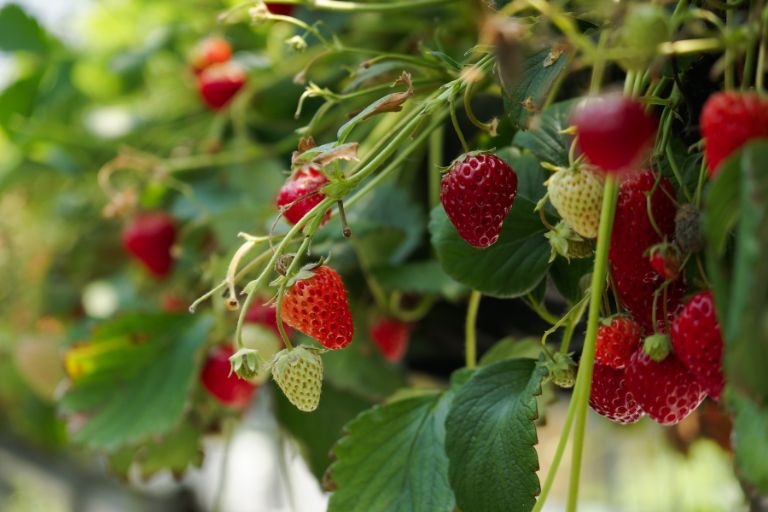
Maintenance and Care
Maintaining indoor fruit plants in a garage environment requires attention to specific tasks to ensure optimal growth, health and productivity. The essential maintenance tasks tailored to indoor gardening in a garage environment are:
Watering
– Monitor soil moisture levels regularly with a moisture meter or by checking the soil’s moisture content with your fingers.
– Water plants thoroughly when the top inch of soil feels dry to the touch, ensuring that water penetrates the entire root zone.
– Avoid overwatering as this can lead to root rot and other moisture-related problems. Ensure proper drainage by using containers with drainage holes and by draining excess water from saucers or trays.
– Adjust watering frequency based on environmental conditions, such as temperature and humidity, and the specific water needs of each fruit plant.
Fertilise
– Use a balanced, water-soluble fertiliser formulated for fruit-bearing plants. Follow the manufacturer’s instructions for dilution rates and frequency of application.
– Apply fertiliser to plants during their active growing season, usually from spring to early autumn. Reduce or stop fertilising during the plant’s dormant period, usually winter.
– Avoid over-fertilising as excess nutrients can lead to salt build-up in the soil and cause nutrient imbalances. Monitor plants for signs of nutrient deficiency or excess and adjust fertilisation accordingly.
Pest control
– Inspect plants regularly for signs of pest infestation, including yellowing leaves, distorted growth or visible pests such as aphids, mites or scales.
– Use mechanical methods such as plucking by hand or gently washing plants with a strong stream of water to remove insects and their eggs.
– Use natural predators such as ladybirds or predatory mites to control pest populations. Release beneficial insects into the garage garden as needed to control common pests.
– If chemical control is necessary, choose organic or low-toxicity pesticides labelled for indoor use and follow application instructions carefully. Use pesticides sparingly and as a last resort, taking care to protect yourself and the environment.
Pruning and training
– Prune fruit plants regularly to remove dead or diseased branches, promote air circulation and maintain desired shape and size.
– Train vines or spreading plants by using stakes, trellises or support structures to guide their growth vertically and prevent overcrowding.
– Remove suckers or excess growth to redirect plant energy to fruit production and encourage stronger, healthier growth.
Disease management
– Practice good hygiene by regularly cleaning and disinfecting garden tools, containers and surfaces to prevent the spread of disease.
– Monitor plants for signs of common diseases such as powdery mildew, fungal infections or bacterial leaf spot. Remove and discard infected plant material immediately to prevent further spread.
– Provide adequate airflow and ventilation to reduce humidity levels and minimise conditions favourable to disease development.
Overcoming common garage gardening challenges, such as managing humidity levels and preventing disease outbreaks, requires proactive measures and careful attention to environmental conditions. Here’s how to tackle these challenges effectively:
Managing humidity levels
– Use a hygrometer to monitor humidity levels in the greenhouse. Ideal humidity levels for most fruit plants are typically between 50% and 70%.
– Increase humidity levels by placing trays of water near plants or using a humidifier to add moisture to the air. Misting plants with water can also help to temporarily increase humidity.
– Improve airflow and ventilation in the garage to prevent humidity build-up. Install exhaust fans or vents to promote air circulation and reduce stagnant air.
– Avoid overwatering plants, as excess moisture in the soil can contribute to high humidity levels. Ensure proper drainage by using containers with drainage holes and allowing excess water to drain away.
Prevent disease outbreaks
– Practice good hygiene by regularly cleaning and disinfecting garden tools, containers and surfaces to minimise the spread of disease.
– Use disease-resistant plant varieties whenever possible to reduce the risk of infection. Research disease-resistant varieties suitable for indoor gardening in your area.
– Provide adequate spacing between plants to improve airflow and reduce humidity levels, which can help prevent the spread of fungal diseases.
– Monitor plants regularly for signs of disease, including wilting, yellowing leaves or unusual spots or lesions. Remove and discard infected plant material immediately to prevent further spread.
– Avoid overhead watering, which can spray soil-borne pathogens onto plant foliage. Instead, water plants at the base using a watering can or drip irrigation system.
– Consider preventive measures such as applying organic fungicides or beneficial microbes to the soil to suppress disease-causing organisms.
Additional tips
– Insulate the garage to regulate temperature and humidity fluctuations that can stress plants and make them more susceptible to disease.
– Maintain a clean and organised garden area, free of debris and weeds that can harbour pests and pathogens.
– Monitor environmental conditions regularly and make adjustments as needed to create a favourable growing environment for your fruit plants.
Enjoying the Fruits of Your Labour
Recognising when your indoor plants are ripe and safely harvesting them is a crucial step in ensuring the best flavour, quality and overall success of your indoor gardening efforts. Below is a step-by-step guide to help you navigate this process:
Observation
– Start by carefully observing the appearance of the fruit. Look for signs of ripeness such as bright colour, uniform size and firmness. Different fruits may have specific colour changes or characteristics that indicate ripeness.
Texture and feel
– Gently touch and feel the fruit to assess its texture. Depending on the variety, ripe fruit should feel slightly soft or yield to light pressure. Avoid fruit that is too firm or mushy as this may indicate under- or over-ripeness.
Smell
– Take a moment to inhale the fruit’s aroma. Ripe fruit often has a sweet, fragrant aroma that indicates optimal flavour and ripeness. If the fruit lacks aroma or smells off, it may not be fully ripe or may be past its prime.
Taste test
– If possible, conduct a taste test to confirm ripeness and flavour. Taste a small portion of the fruit to assess its sweetness, acidity and overall flavour profile. Use this information to judge the fruit’s readiness for harvest.
Harvesting
– Use clean, sharp pruning shears or scissors to carefully cut or clip the fruit from the plant. Make clean cuts close to the stem or branch without damaging the surrounding plant tissue.
– Fruit with delicate skin or stems, such as berries or grapes, should be handled carefully to avoid bruising or damage during harvesting.
– Harvest fruit early in the morning when temperatures are cooler and plants are well hydrated. This will minimise stress on the plant and keep the fruit fresh.
Handling and storage
– Handle harvested fruit with care to avoid bruising or injury. Place in a shallow container or basket lined with paper towels to absorb excess moisture and cushion the fruit during transport.
– Store harvested fruit in a cool, dry place out of direct sunlight. Avoid stacking or overcrowding fruit as this can lead to bruising and spoilage.
– When storing several fruits together, be careful with ethylene-producing fruits (such as apples, bananas, and tomatoes) as they may accelerate the ripening and spoilage of other fruits.
Enjoy
– Once harvested, enjoy your fruits at their peak ripeness for the best flavour and freshness. Add them to your favourite recipes, share them with friends and family, or enjoy them as a nutritious snack.
Remember to handle the fruit with care, watch for signs of ripeness and enjoy the delicious flavours of your home-grown harvest.
Incorporating home-grown fruit into delicious recipes is a rewarding way to enjoy the fruits of your gardening efforts. Here are some creative and delicious ways to make the most of your homegrown harvest:
Fruit salad
– Combine a variety of freshly picked fruits such as strawberries, blueberries, raspberries and diced apples or pears in a large bowl.
– Drizzle with a honey-lime dressing made with freshly squeezed lime juice, honey and a pinch of cinnamon for a refreshing and vibrant fruit salad.
Smoothies and smoothie bowls
– Blend your favourite fruits with yoghurt, milk or juice and a handful of leafy greens like spinach or kale to make nutritious smoothies.
– Pour the smoothie into a bowl and top with sliced fruit, granola, nuts, seeds and a drizzle of honey for added texture and flavour.
Fruit jam or preserves
– Boil down excess fruit into homemade jams or preserves with minimal added sugar and natural pectin.
– Spread the jam on toast, biscuits or pancakes for a delicious breakfast treat, or use it as a filling for pastries, thumbprint cookies or sandwich biscuits.
Fruit crumbles and cobblers
– Make fruit crumbles or cobblers by layering sliced fruit such as peaches, berries or apples in a baking dish and topping with a crumbly mixture of oats, flour, butter and sugar.
– Bake until the fruit is bubbling and the topping is golden brown, then serve warm with a scoop of vanilla ice cream or a dollop of whipped cream.
Fruit salsa and chutney
– Dice fresh fruit such as mango, pineapple or peach and combine with diced onion, bell pepper, coriander, lime juice and a dash of chilli powder to make fruity salsas.
– Make fruit chutneys by simmering chopped fruit with vinegar, sugar and spices until thickened. Serve with grilled meat, fish or cheese for a flavourful accompaniment.
Fruit infused water or cocktails
– Add sliced fruit such as citrus, berries or cucumbers to a pitcher of water for a refreshing and hydrating drink.
– Use homegrown fruit to garnish cocktails or mocktails for a festive touch. Try muddling fresh herbs and fruits together to create flavourful and aromatic cocktails.
Fruit desserts
– Bake fruit pies, tarts or galettes using your homegrown fruit as the star ingredient. Experiment with different fruit combinations and crust variations for endless dessert possibilities.
– Whip up fruit-filled desserts like fruit parfaits, fruit crisps or fruit sorbets using your freshly harvested fruits for a satisfying and indulgent treat.
Fruit infused vinegars and oils
– Infuse vinegar or olive oil with fresh fruit and herbs to create flavourful dressings, marinades or dipping sauces.
– Combine fruits such as berries, citrus peel or stone fruit with vinegar or oil in a sterilised jar and leave to infuse for a few weeks before straining and using in your favourite recipes.
In the ever-evolving landscape of modern gardening, the garage has emerged as a surprising yet ingenious solution to the age-old challenge of growing fresh fruit in an urban environment. What was once a forgotten space for storing tools and old belongings has been transformed into a thriving green oasis where fruit ripens under the soft glow of grow lights and the steady hum of fans.
As we conclude our exploration of growing fruit in garages, it’s clear that this innovative approach offers a host of benefits beyond mere convenience. From the ability to extend the growing season throughout the year to the satisfaction of nurturing plants from seed to harvest, garage gardening embodies the essence of self-sufficiency and sustainability.
What’s more, garage gardening is not just about the fruit itself, but also about the sense of connection with nature and the satisfaction of seeing the fruits of one’s labour come to fruition. It’s about enjoying the simple pleasures of biting into a sun-ripened strawberry or savouring the sweet juiciness of a freshly picked peach, knowing that it has been carefully nurtured right in your own garage.
As more and more people embrace the possibilities of garage gardening, we can expect to see a continued resurgence in the appreciation of home-grown produce and the art of growing fruit in unconventional spaces. So whether you’re an experienced gardener or a novice enthusiast, consider unlocking the potential of your garage and embark on a journey of discovery, creativity and delicious abundance. After all, when it comes to growing fruit in your garage, the only limit is your imagination.
